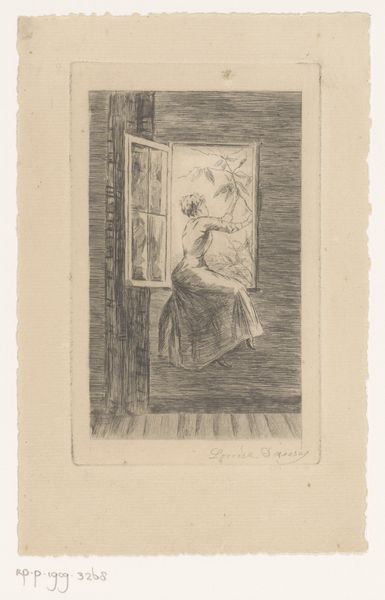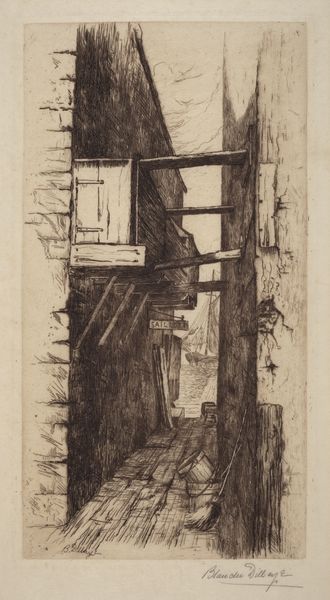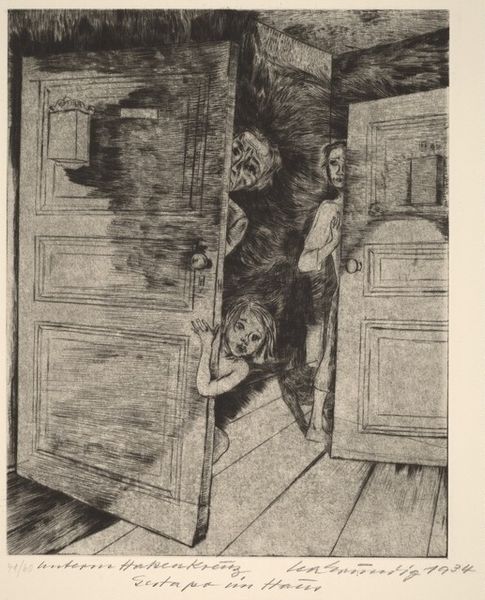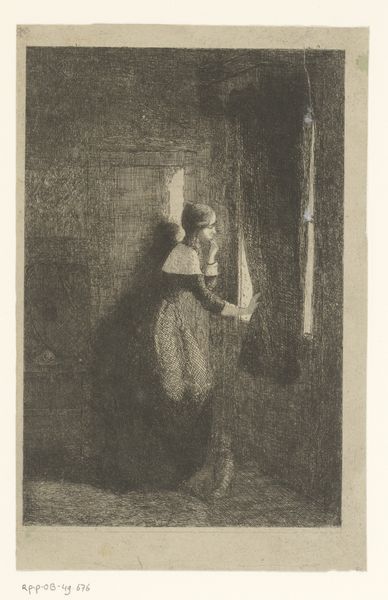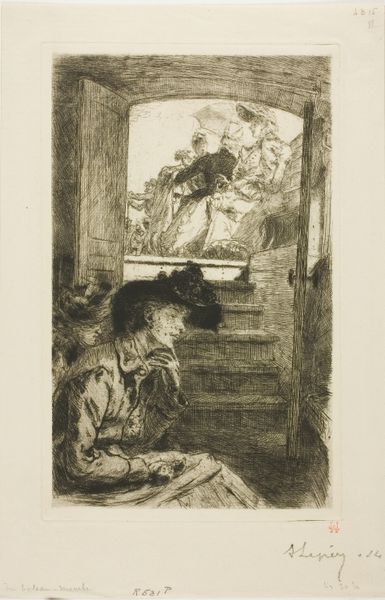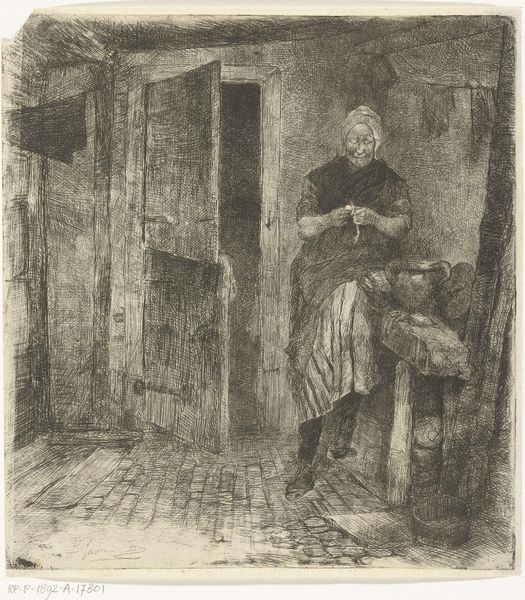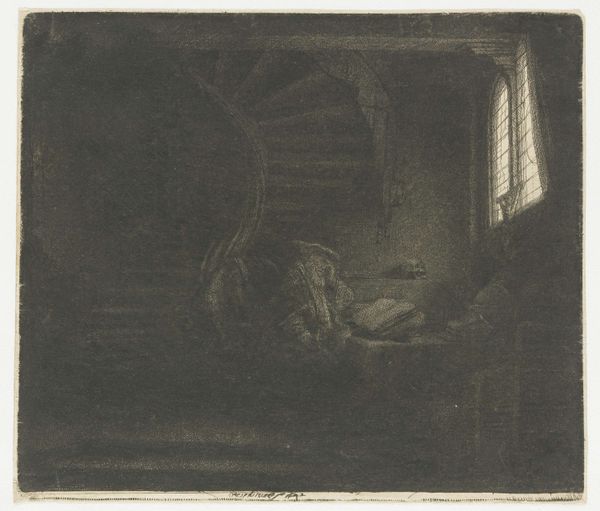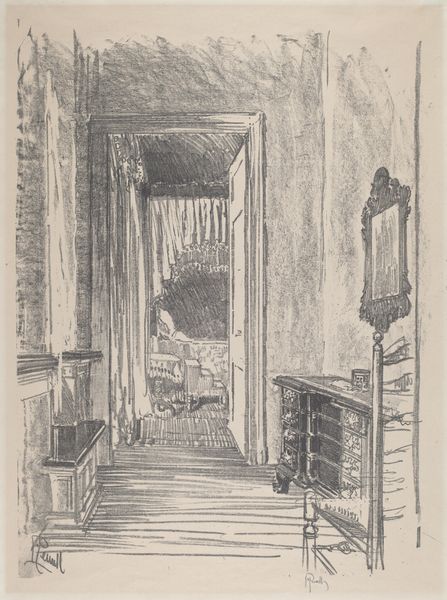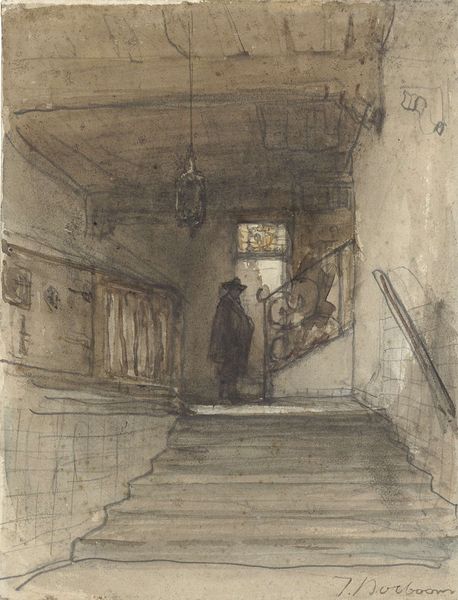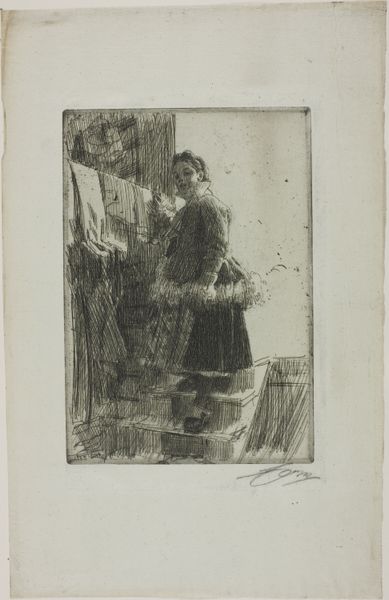
drawing, ink, pen
#
portrait
#
drawing
#
dutch-golden-age
#
pencil sketch
#
charcoal drawing
#
ink
#
pen
#
portrait drawing
#
watercolour illustration
#
genre-painting
Dimensions: height 154 mm, width 149 mm
Copyright: Rijks Museum: Open Domain
Curator: Looking at this sensitive drawing by Nicolaes Maes, made sometime between 1644 and 1693, one is struck by the artist's quiet observation of domestic life. Editor: I'm immediately drawn to the interplay of textures and the monochrome palette. You can almost feel the rough-hewn quality of the wood against the soft fabric of her clothing. What a study in materials! Curator: Precisely. "Vrouw over onderdeur geleund", or "Woman Leaning over a Half-Door", it's an intimate glimpse into the world of a woman, probably within the confines of her home. The use of pen, ink, and watercolour builds to the narrative effect of quiet introspection. It encourages us to ask: who is she and what’s she looking at? What were the socially constructed expectations for women in Dutch society? Editor: The layered technique adds dimension to the wooden structures, drawing the eye to where it has naturally aged and changed color over time. I am especially intrigued by the process and decisions inherent in creating this texture, particularly when thinking about the material scarcity of quality paper and the price of pen, ink, and watercolour! Curator: I think you’ve hit upon an important tension there. On one hand it's just a simple, informal genre scene and on the other there's social positioning at play; how different members of society did and didn't have time and opportunities to pause or contemplate or just lean… The woman's gaze seems to intersect this liminal space of private life and a yearning for freedom, don't you think? Editor: The drawing becomes incredibly suggestive once that socio-political viewpoint is incorporated into how we interpret her figure and her environment. Curator: I think, by engaging the various approaches and lenses, this simple drawing invites us to consider our place within society, both then and now. Editor: It truly highlights the intersection of material production, artful creation, and socio-historical understanding in a really compelling way.
Comments
No comments
Be the first to comment and join the conversation on the ultimate creative platform.
